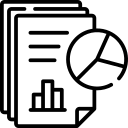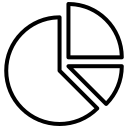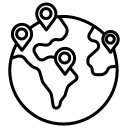$4450
$3560
The commercial rainscreen cladding market size is projected to reach US$ 8,862.83 million by 2031 from US$ 5,537.44 million in 2024. The market is expected to register a CAGR of 6.8% during 2025–2031.
Commercial Rainscreen Cladding Market Analysis
The market's growth is driven by the rising demand for energy-efficient and sustainable buildings, growing construction and infrastructural development activities worldwide, and increasing urbanization, leading to new constructions and renovations. Increased focus on sustainability and eco-friendly building materials and growing awareness of moisture management and thermal performance benefits contribute to market development. Opportunities lie in the increasing investment in emerging economies with growing urban populations, coupled with the growing demand for lightweight, durable, and corrosion-resistant cladding materials such as aluminum composites.
Commercial Rainscreen Cladding Market Overview
Commercial rainscreen cladding systems are facade panel systems for buildings that protect the structures from elements such as wind-driven rain. At the same time, these systems provide thermal insulation and decorative value. These systems have a layer of outer weatherproof cladding separated from the building’s structural wall by an air cavity or ventilated gap, providing space for moisture drainage and air circulation. This gap acts as a barrier, preventing water from entering the building. Additionally, it reduces moisture levels, improving the building's energy efficiency and longevity. The materials for the claddings may be aluminum, metal, stone, glass, or composite panels, which are available in various compositions and colors for the desired finish and appearance.
Customize Research To Suit Your Requirement
We can optimize and tailor the analysis and scope which is unmet through our standard offerings. This flexibility will help you gain the exact information needed for your business planning and decision making.
Commercial Rainscreen Cladding Market: Strategic Insights


Naveen
Have a question?
Naveen will walk you through a 15-minute call to present the report’s content and answer all queries if you have any.
 Speak to Analyst
Commercial Rainscreen Cladding Market and Opportunities
Speak to Analyst
Commercial Rainscreen Cladding Market and Opportunities
Customize Research To Suit Your Requirement
We can optimize and tailor the analysis and scope which is unmet through our standard offerings. This flexibility will help you gain the exact information needed for your business planning and decision making.
Commercial Rainscreen Cladding Market: Strategic Insights


Naveen
Have a question?
Naveen will walk you through a 15-minute call to present the report’s content and answer all queries if you have any.
 Speak to Analyst
Speak to Analyst
Market Drivers:
Growing demand for energy-efficient and sustainable building materials:
Increased focus on reducing carbon footprints, complying with green building regulations, and enhancing thermal performance encourages the adoption of rainscreen cladding systems. Rainscreen cladding systems enhance durability, insulation, and aesthetics, supporting long-term environmental and economic benefits.Stricter government regulations on energy efficiency and fire safety:
The global commercial rainscreen cladding market is largely influenced by strict energy efficiency and fire safety regulations imposed by governments. As a result, these regulations encourage architects and developers to utilize materials and building systems that exhibit good thermal performance, low energy consumption, and high fire resistance, creating a market for new, compliant, and sustainable rainscreen solutions for commercial buildings.Increase in urbanization and commercial construction projects:
The rising demand for modern infrastructure, energy-efficient buildings, and improved aesthetics fuels the adoption of rainscreen cladding systems. The increasing investments in offices, retail complexes, and institutional spaces further accelerate market growth, creating profitable opportunities for rainscreen cladding solutions.
Market Opportunities:
Expansion of infrastructure and urban development, especially in Asia Pacific:
Rising urbanization, smart city projects, and the demand for sustainable, energy-efficient building solutions boost the adoption of rainscreen cladding systems. Increased investments by governments in modern architecture and green construction further drive market growth in this dynamic, high-potential region.Increasing retrofitting and renovation activities in aging commercial buildings:
The rising demand for energy efficiency, improved aesthetics, and structural durability drives the adoption of advanced cladding solutions. Renovation projects increasingly prioritize rainscreen systems to enhance building performance, sustainability, and long-term value creation.Rising adoption of smart, sustainable, and recyclable cladding technologies:
Increasing environmental regulations, green building initiatives, and demand for energy efficiency are pushing businesses to invest in innovative, eco-friendly cladding solutions, creating strong market opportunities worldwide.
Commercial Rainscreen Cladding Market Report Segmentation Analysis
The commercial rainscreen cladding market is divided into different segments to provide a clearer view of its operation, growth potential, and the latest trends. Below is the standard segmentation approach used in most industry reports:
By Cladding Material:
Ceramic
Ceramic cladding materials such as porcelain and terracotta are renowned for their durability, aesthetic flexibility, and low maintenance requirements.Timber
The natural aesthetic of timber offers commercial projects a premium visual identity, enhances biophilic design strategies, and elevates brand perception for business spaces, hotels, and retail initiatives.Composite Materials
The composite material cladding is a major segment in the global commercial rainscreen cladding market as it is distinguished by its superior performance, flexibility, and contemporary aesthetic appeal.Metal
Aluminum variants dominate due to their lightweight nature, exceptional corrosion resistance, and adaptability to various finishes, such as anodizing and pre-painting.Others
These materials are selected mainly due to their unique aesthetic appeal, durability, and functional properties, which allow architects to achieve distinct design visions while meeting performance requirements.
By Construction Type:
New Construction:
Advanced materials, including composites and metals, are often adopted during new construction activities to deliver durability, flexibility, and effective waterproofing, which are highly demanded features in contemporary commercial buildings.Renovation:
Growing renovations in commercial buildings worldwide help reduce maintenance costs and mitigate structural damage caused by environmental factors, making renovation a cost-effective strategy for property owners in the long term.
By Geography:
- North America
- Europe
- Asia Pacific
- Latin America
- Middle East & Africa
The commercial rainscreen cladding market in Asia Pacific is expected to witness the fastest growth. The growth in new housing developments and an increase in middle-class populations demanding modern amenities and energy-efficient solutions in countries such as China, India, and Japan are likely to drive the market.
Commercial Rainscreen Cladding Market Report ScopeCommercial Rainscreen Cladding Market Share Analysis by Geography
Asia Pacific is expected to grow the fastest in the next few years. Emerging markets in South America and the Middle East and Africa also have many untapped opportunities for commercial rainscreen cladding providers to expand.
The commercial rainscreen cladding market grows differently in each region, owing to technological integration, governmental incentives, green building initiatives, and growing usage of sustainable commercial rain screening developments. Below is a summary of market share and trends by region:
1. North America
Market Share:
Holds significant portion of global marketKey Drivers:
- Rapid urbanization and the expansion of the housing industry in North America are significantly driving the demand for commercial rainscreen cladding as cities develop and new construction projects accelerate.
Trends:
Growing demand for energy-efficient, aesthetic building solutions
2. Europe
Market Share:
Substantial share due to growing focus on energy efficiency and carbon reductionKey Drivers:
- The European commercial rainscreen cladding market is primarily influenced by the strong focus on energy saving and carbon reduction, which is in line with the region's sustainability targets and the regulatory pressures. Additionally, the increasing use of ventilated facades and composite panels is driving demand, as these measures enhance both the functionality and visual appeal of the building.
Trends:
Growth in commercial real estate development, including office buildings, retail spaces, and urban business centers
3. Asia Pacific
Market Share:
Fastest-growing region with rising market share every yearKey Drivers:
- Rapid urbanization fueled by population growth and economic development is driving large-scale infrastructure projects, boosting the demand for durable and aesthetic rainscreen cladding in the Asia Pacific commercial construction sector.
Trends:
Growing integration with IoT and technologies
4. South and Central America
Market Share:
Growing market with steady progress driven by rapid urbanization and increasing construction projects that demand modern and sustainable building solutionsKey Drivers:
- The shift toward designs that balance beauty with functionality has made rainscreen cladding highly attractive, allowing architects to create distinctive building envelopes while enhancing energy efficiency and weather protection.
Trends
: Increased adoption of composite and sustainable materials that offer durability
5. Middle East and Africa
Market Share:
Although small, but growing quicklyKey Drivers:
- Rainscreen cladding systems have become essential as they create a ventilated cavity between the cladding and the building structure, which improves moisture drainage, reduces heat transfer, and protects the facade against environmental damage
Trends:
Growing awareness about sustainability and energy efficiency
Commercial Rainscreen Cladding Market Players Density: Understanding Its Impact on Business Dynamics
High Market Density and Competition
Competition is intense due to the presence of established players such as Merson Group and Trespa International B.V. Regional and niche providers such as Prefa (UK), Eco Earth Solutions (India), and Britplas (UK) are also adding to the competitive landscape across different regions.
This high level of competition urges companies to stand out by:
- Offering technically advanced products with superior weather resistance, color stability, fire resistance, and durability
- Providing end-to-end solutions from raw material sourcing through to installation, ensuring quality control and cost efficiency
- Delivering customized and aesthetically appealing façade designs that meet both functional and architectural demands, supporting branding for commercial and institutional clients
- Ensuring compliance with regional building codes and regulations, especially fire safety and material fitness standards
Opportunities and Strategic Moves
- Develop and market cladding systems that enhance buildings' energy performance by improving insulation and reducing heat loss, responding to stricter energy regulations.
- Invest in advanced materials such as composite panels with superior durability, weather resistance, and low maintenance.
- Explore and implement smart rainscreen cladding with embedded sensors to monitor and optimize temperature, humidity, and moisture levels, enhancing building performance.
Other companies analyzed during the course of research:
- Prefa
- Eco Earth Solutions
- Britplas
- Euramax
- CENTRIA®, a Nucor® company
- CA Group Limited
- Alpolic (Mitsubishi Chemical Group)
- Aurubis Finland Oy
- Hunter Douglas
- Rigidized Metals Corporation
- Elval Colour
- Aluform Systeme
- Ironbound
- TBK Metal Co. Ltd.
Commercial Rainscreen Cladding Market News and Recent Developments
Clark Dietrich announced the launch of its new ProChannel Ci – Vertical cladding support systems
In response to customer demands, Clark Dietrich announced the launch of its new ProChannel Ci – Vertical cladding support systems featuring grip deck tube seal technology in May 2025. The newly released product offers construction workers a way to set up vertical rainscreen cladding systems.
Sto. Corp announced the unveiling of StoVentec Fiber Cement Rainscreen System
The StoVentec Fiber Cement Rainscreen System by Sto Corp is a newly launched, advanced ventilated rainscreen cladding system designed to blend sustainability, design freedom, and high performance.
Commercial Rainscreen Cladding Market Report Coverage and Deliverables
The "Commercial Rainscreen Market Size and Forecast (2021–2031)" report provides a detailed analysis of the market covering below areas:
- Commercial rainscreen market size and forecast at global, regional, and country levels for all the key market segments covered under the scope
- Commercial rainscreen market trends, as well as market dynamics such as drivers, restraints, and key opportunities
- Detailed PEST and SWOT analysis
- Commercial rainscreen market analysis covering key market trends, global and regional framework, major players, regulations, and recent market developments
- Industry landscape and competition analysis covering market concentration, heat map analysis, prominent players, and recent developments for the commercial rainscreen market
- Detailed company profiles

Report Coverage
Revenue forecast, Company Analysis, Industry landscape, Growth factors, and Trends

Segment Covered
This text is related
to segments covered.

Regional Scope
North America, Europe, Asia Pacific, Middle East & Africa, South & Central America

Country Scope
This text is related
to country scope.
Frequently Asked Questions
Growing use of AI-powered climate-responsive facades
Asia Pacific dominated the market in 2024, followed by North America and Europe
The growing emphasis on building sustainability and energy efficiency, increasing urbanization and the construction of commercial spaces, and technological advancements in cladding materials are driving the market.
increasing adoption of sustainable construction materials as governments and regulatory bodies worldwide.
The metal segment accounts for a larger market share.
The key players in the commercial rainscreen cladding market include Merson Group, Trespa International B.V., Carea Ltd, Kingspan Holdings (Ireland) Limited, ROCKWOOL A/S, Soprema Insulation Limited, Fundermax North America Inc., Knauf Digital GmbH, and James Hardie Building Products Inc.
The commercial rainscreen cladding market size is projected to reach US$ 8,862.83 million by 2031 from US$ 5,537.44 million in 2024. The market is expected to register a CAGR of 6.8% during 2025–2031.
The market is expected to grow steadily during the forecast period. Such growth is due to more stringent building codes that concentrate on energy conservation and safety against fire.
Yes, the new construction segment is growing in demand. This construction type often adopts advanced materials, including composites and metals, to deliver durability, flexibility, and effective waterproofing.
The List of Companies - Commercial Rainscreen Cladding Market
- Merson Group (UK)
- Trespa International B.V.
- Carea Ltd (UK)
- Kingspan Holdings (Ireland) Limited (Ireland)
- ROCKWOOL A/S (Denmark)
- Soprema Insulation Limited (UK)
- Fundermax North America Inc. (Austria)
- Knauf Digital GmbH (Germany)
- James Hardie Building Products Inc. (Dublin)
- Murray Companies, Inc. (US)
- CENTRIA, a Nucor® company (US)
- VM Building Solutions (Belgium)
- Viva ACP (India)
- NICHIHA (US)
- Eco Earth Solutions (India)
The Insight Partners performs research in 4 major stages: Data Collection & Secondary Research, Primary Research, Data Analysis and Data Triangulation & Final Review.
- Data Collection and Secondary Research:
As a market research and consulting firm operating from a decade, we have published many reports and advised several clients across the globe. First step for any study will start with an assessment of currently available data and insights from existing reports. Further, historical and current market information is collected from Investor Presentations, Annual Reports, SEC Filings, etc., and other information related to company’s performance and market positioning are gathered from Paid Databases (Factiva, Hoovers, and Reuters) and various other publications available in public domain.
Several associations trade associates, technical forums, institutes, societies and organizations are accessed to gain technical as well as market related insights through their publications such as research papers, blogs and press releases related to the studies are referred to get cues about the market. Further, white papers, journals, magazines, and other news articles published in the last 3 years are scrutinized and analyzed to understand the current market trends.
- Primary Research:
The primarily interview analysis comprise of data obtained from industry participants interview and answers to survey questions gathered by in-house primary team.
For primary research, interviews are conducted with industry experts/CEOs/Marketing Managers/Sales Managers/VPs/Subject Matter Experts from both demand and supply side to get a 360-degree view of the market. The primary team conducts several interviews based on the complexity of the markets to understand the various market trends and dynamics which makes research more credible and precise.
A typical research interview fulfils the following functions:
- Provides first-hand information on the market size, market trends, growth trends, competitive landscape, and outlook
- Validates and strengthens in-house secondary research findings
- Develops the analysis team’s expertise and market understanding
Primary research involves email interactions and telephone interviews for each market, category, segment, and sub-segment across geographies. The participants who typically take part in such a process include, but are not limited to:
- Industry participants: VPs, business development managers, market intelligence managers and national sales managers
- Outside experts: Valuation experts, research analysts and key opinion leaders specializing in the electronics and semiconductor industry.
Below is the breakup of our primary respondents by company, designation, and region:

Once we receive the confirmation from primary research sources or primary respondents, we finalize the base year market estimation and forecast the data as per the macroeconomic and microeconomic factors assessed during data collection.
- Data Analysis:
Once data is validated through both secondary as well as primary respondents, we finalize the market estimations by hypothesis formulation and factor analysis at regional and country level.
- 3.1 Macro-Economic Factor Analysis:
We analyse macroeconomic indicators such the gross domestic product (GDP), increase in the demand for goods and services across industries, technological advancement, regional economic growth, governmental policies, the influence of COVID-19, PEST analysis, and other aspects. This analysis aids in setting benchmarks for various nations/regions and approximating market splits. Additionally, the general trend of the aforementioned components aid in determining the market's development possibilities.
- 3.2 Country Level Data:
Various factors that are especially aligned to the country are taken into account to determine the market size for a certain area and country, including the presence of vendors, such as headquarters and offices, the country's GDP, demand patterns, and industry growth. To comprehend the market dynamics for the nation, a number of growth variables, inhibitors, application areas, and current market trends are researched. The aforementioned elements aid in determining the country's overall market's growth potential.
- 3.3 Company Profile:
The “Table of Contents” is formulated by listing and analyzing more than 25 - 30 companies operating in the market ecosystem across geographies. However, we profile only 10 companies as a standard practice in our syndicate reports. These 10 companies comprise leading, emerging, and regional players. Nonetheless, our analysis is not restricted to the 10 listed companies, we also analyze other companies present in the market to develop a holistic view and understand the prevailing trends. The “Company Profiles” section in the report covers key facts, business description, products & services, financial information, SWOT analysis, and key developments. The financial information presented is extracted from the annual reports and official documents of the publicly listed companies. Upon collecting the information for the sections of respective companies, we verify them via various primary sources and then compile the data in respective company profiles. The company level information helps us in deriving the base number as well as in forecasting the market size.
- 3.4 Developing Base Number:
Aggregation of sales statistics (2020-2022) and macro-economic factor, and other secondary and primary research insights are utilized to arrive at base number and related market shares for 2022. The data gaps are identified in this step and relevant market data is analyzed, collected from paid primary interviews or databases. On finalizing the base year market size, forecasts are developed on the basis of macro-economic, industry and market growth factors and company level analysis.
- Data Triangulation and Final Review:
The market findings and base year market size calculations are validated from supply as well as demand side. Demand side validations are based on macro-economic factor analysis and benchmarks for respective regions and countries. In case of supply side validations, revenues of major companies are estimated (in case not available) based on industry benchmark, approximate number of employees, product portfolio, and primary interviews revenues are gathered. Further revenue from target product/service segment is assessed to avoid overshooting of market statistics. In case of heavy deviations between supply and demand side values, all thes steps are repeated to achieve synchronization.
We follow an iterative model, wherein we share our research findings with Subject Matter Experts (SME’s) and Key Opinion Leaders (KOLs) until consensus view of the market is not formulated – this model negates any drastic deviation in the opinions of experts. Only validated and universally acceptable research findings are quoted in our reports.
We have important check points that we use to validate our research findings – which we call – data triangulation, where we validate the information, we generate from secondary sources with primary interviews and then we re-validate with our internal data bases and Subject matter experts. This comprehensive model enables us to deliver high quality, reliable data in shortest possible time.
Trends and growth analysis reports related to Commercial Rainscreen Cladding Market

Oct 2025
Industial Rainscreen Cladding Market
Size and Forecast (2021 - 2031), Global and Regional Share, Trend, and Growth Opportunity Analysis Report Coverage: By Cladding Material (Ceramic, Timber, Composite Materials, Metals, and Others), Construction Type (New Construction and Renovation), and Geography

Oct 2025
Commercial Rainscreen Cladding Market
Size and Forecast (2021 - 2031), Global and Regional Share, Trend, and Growth Opportunity Analysis Report Coverage: By Cladding Material (Ceramic, Timber, Composite Materials, Metals, and Others), Construction Type (New Construction and Renovation), and Geography (North America, Europe, Asia Pacific, Middle East and Africa, and South America)

Oct 2025
Residential Rainscreen Cladding Market
Size and Forecast (2021 - 2031), Global and Regional Share, Trend, and Growth Opportunity Analysis Report Coverage: By Cladding Material (Ceramic, Timber, Composite Materials, Metals, and Others), Construction Type (New Construction and Renovation), and Geography (North America, Europe, Asia Pacific, Middle East and Africa, and South America)

Oct 2025
Ring Cross Belt Sorter Market
Size and Forecast (2021 - 2031), Global and Regional Share, Trend, and Growth Opportunity Analysis Report Coverage: By Capacity (Below 5000 units/hr, 5000-15000 units/hr , and above 15000 units/hr), End-Use Industry (Airports, E-Commerce, Retail and Fashion, Food and Beverages, Manufacturing, Automotive, Logistics, and Others), and Geography (North America, Europe, Asia Pacific, Middle East and Africa, and South America)

Oct 2025
Linear Cross Belt Sorter Market
Size and Forecast (2021 - 2031), Global and Regional Share, Trend, and Growth Opportunity Analysis Report Coverage: By Capacity (Below 5000 Units/Hr, 5000-15000 Units/Hr, and Above 15000 Units/Hr), End-Use Industry (Airports, E-Commerce, Retail, and Fashion; Food and Beverages; Manufacturing; Automotive; Logistics; and Others), and Geography (North America, Europe, Asia Pacific, Middle East and Africa, and South and Central America)

Oct 2025
Coordinate Grinding Machinery Market
Size and Forecast (2021 - 2031), Global and Regional Share, Trend, and Growth Opportunity Analysis Report Coverage : By Industry (Medical, Mold and Die Industry, Aerospace and Defense, Automotive, Electronics and Electrics, Industrial Machinery and Others), Machine Technology (CNC or NC Machine and Conventional Machine), and Geography (North America, Europe, Asia Pacific, Middle East and Africa, and South America)

Oct 2025
Cylindrical Grinding Machine Market
Size and Forecast (2021 - 2031), Global and Regional Share, Trend, and Growth Opportunity Analysis Report Coverage:By Type (External, Internal, and Others), Industry (Medical, Mold and Die Industry, Aerospace and Defense, Automotive, Electrics and Electronics, Industrial Machinery, and Others), Machine Technology (CNC or NC Machine and Conventional Machines), and Geography

Oct 2025
Aluminium Formwork Market
Size and Forecast (2021 - 2031), Global and Regional Share, Trend, and Growth Opportunity Analysis Report Coverage: By Offering (Solution, Services), Type (Slab Formwork, Wall Formwork, Corner Formwork, Beam Formwork, Others), Application (Industrial, Commercial, Residential), and Geography (North America, Europe, Asia Pacific, Middle East and Africa, and South and Central America)